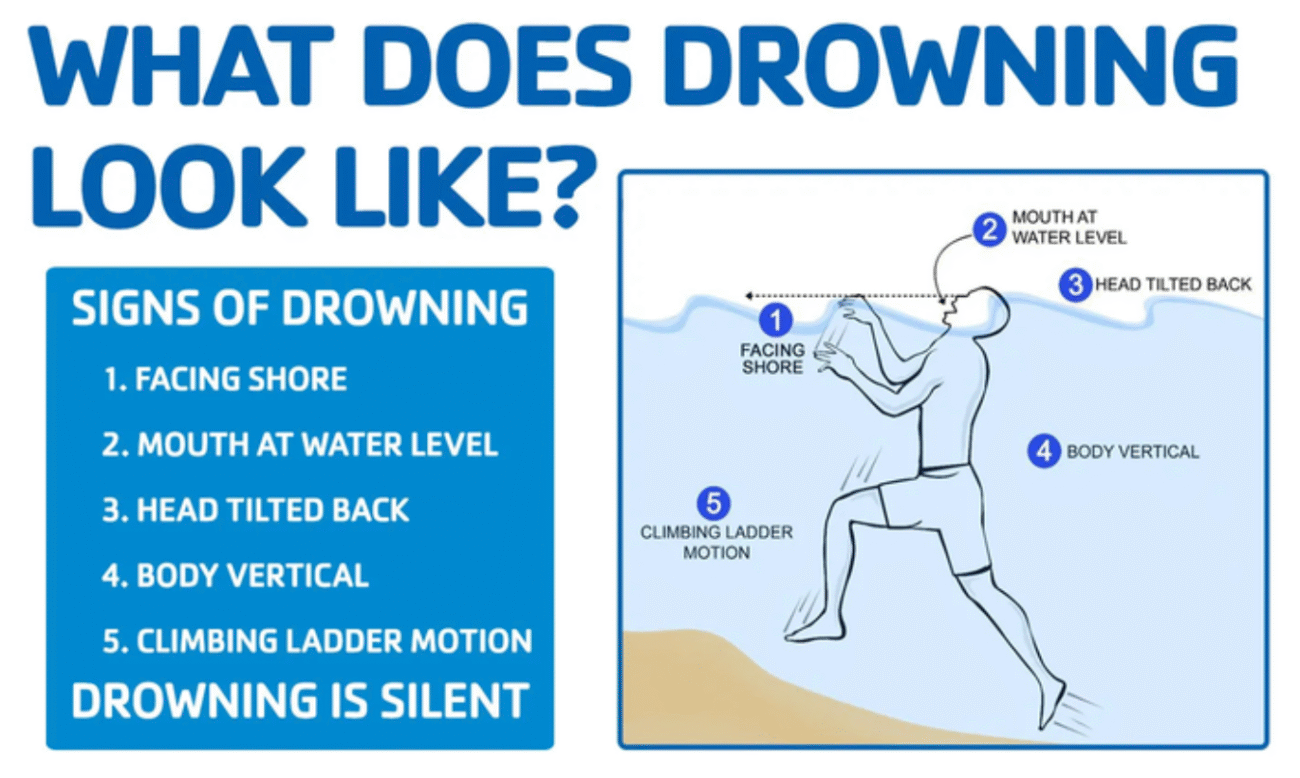Hampton & Peninsula Health Districts Share Drowning Prevention Tips
The Hampton & Peninsula Health Districts are urging residents to know the signs of drowning. (Hampton & Peninsula Health Districts)
HAMPTON ROADS — For those celebrating the holiday weekend at the pool, the beach, the river or the lake, the Hampton & Peninsula Health Districts is offering drowning prevention tips to keep you healthy and safe while swimming.
In Virginia, HPHD notes nearly 500 people have accidentally drowned over the last five years, and drowning is a leading cause of death in children.
“Virginia has seen a spike in child drowning deaths this summer,” says HPHD’s Health District Director, Dr. Natasha Dwamena. “These heartbreaking deaths are preventable, and there are precautions caregivers can take to protect their children from drowning. Caregivers should never leave children to swim unattended and should be cautious in and around bodies of water. It is also important that caregivers dress their children in bright colored swimsuits, such as neon pink, yellow, and orange, as that will be more noticeable in the event of drowning in water.”
Drowning often occurs quickly and silently, HPHD cautions. The signs of drowning are subtle and last only 20-60 seconds before the person goes under.
The Hampton & Peninsula Health Districts offer these prevention tips:
- Provide active supervision for all children in the water. A responsible adult should watch children closely when they are in or around water. Adults should not be distracted or engaged in other activities, even if lifeguards are present. For preschool-aged children, “touch supervision” is recommended, where the supervising adult is within arm’s reach of the child.
- Learn to swim. Knowing how to swim can reduce the risk of drowning.
- Learn CPR. Make sure we know what to do if someone needs help in the water.
- Always swim with a buddy. Never swim alone.
- Avoid swimming after dark. Signs of drowning are harder to see.
- Watch for swimming hazards like rip currents and rough waters.
- Observe any advisories and listen to lifeguards.
- “Floaties,” arm bands, and water wings are toys, not safety devices. When these toys are in use, the caregiver must still provide active supervision. Wear U.S. Coast Guard-approved life jackets.
- Make sure pools have the proper safety features in place to help reduce the risk of injury.
Visit swimhealthyva.com for more information.


